As summer winds down and daylight hours grow shorter, the egg basket will begin to feel a little lighter. A seasonal drop in a hen’s egg production is an expected, hormone-driven response to decreased light in autumn and winter. Many chicken-keepers support egg-laying during these darker seasons by supplying a few extra hours of light for the hens. Supplemental light will not force hens to lay eggs, rather, it provide them with the needed resource to lay eggs if they already have all the other resources needed. Let’s take a look at how that works.
HOW DOES LIGHT PROMOTE EGG PRODUCTION?
A hen’s ovary is stimulated to produce eggs by the many glands that comprise her endocrine system and the endocrine system is stimulated by light. Adding supplemental light inside the coop can trigger a hen’s endocrine system into action, allowing her to produce eggs as it did in the spring and summer months. This will not force her to lay eggs, however. She can only lay eggs if she has all the other resources necessary for egg production, including a nutritionally complete diet, clean water, and good health, to name a few.
Whether to light the coop to support egg production is a decision best made with the facts about hen anatomy.I consulted with a laying hen veterinarian whose only job is to care for chickens about this subject. Dr. Mike Petrik, DVM, MSc has more than 13 years of practice in addition to his medical education and training and a Master of Science in animal welfare. I asked Dr. Petrik the following questions to debunk oft parroted misinformation about supplemental light in the hen house:
- Does supplemental lighting harm a hen or shorten a hen’s lifespan? (short answer=NO)
- Will supplemental lighting cause a hen to run out of eggs prematurely? (short answer=NO)
The following was his reply:
“Seasonal lighting is one of the most important factors in a laying hen’s life. The increasing day length in the spring stimulates the hormone cascade that gets her body prepared for, and instigates egg production. The decreasing day-length in the fall will cause hens to go “on strike”….put their ovaries back into dormancy, and free-load for the winter. In temperate climates, where hens evolved (mostly Indo-China, India and some in the Mediterranean), this was a good strategy for decreasing nutrient needs during the winter, when food and other resources were scarce.
Day length is not actually registered by the eyes of the chicken. The pineal gland in the brains of chickens sits just beneath a thin area of the skull, right between the hen’s eyes. This organ is what senses day length, and stimulates the pituitary gland to start hormone production that results in eggs being laid. In experiments at the University of Guelph in Canada, researchers used genetically blind chickens (a line of birds that have a genetic defect that results in no retina, and therefore no sight) to study the effect of different kinds of light and day length on sexual maturity in hens. This was the most elegant way to ensure that nothing the bird was seeing was affecting sexual maturity…..these hens had identical responses to increased day length as their normally sighted counterparts!
Hens don’t actually sense day length, they perceive the length of the dark period. The longest dark time is the thing that defines day-length to hens. It is possible (and common in professional egg farms) to give flocks naps during the day….if the dark time for the nap is shorter than the night time, the hen does not respond to it, other than to settle down and rest for a couple hours [meaning, they will still lay eggs in the morning].
The important points are this: if you want you chickens to keep laying eggs during the fall and winter months, you need to keep the length of their “day” longer than 13 or 14 hours. To do this, the simplest way is to look-up a sunset/sunrise chart for your latitude, see what the earliest sunset time is, then set an automatic timer in your coop to come on 15 hours previous to that. Do this in the summer, when the sun rises before your lights come on.
If you have already had hens come out of lay due to the fall, you can stimulate them back into lay by setting your timer for 20 minutes before dawn, then turning it 20 minutes earlier every week until 15 hours of day length is reached. Your hens should come back into production within 4-6 weeks of this stimulation (it takes that long for the hormone cascade to result in egg production).
I’ve heard people comment that artificial light will decrease the hen’s lifespan, or decrease the number of eggs she lays during her lifetime. There is no evidence of supplemental lighting decreasing longevity, provided you supply adequate nutrition and allow the birds to molt every 12-18 months. The molt is necessary to replenish bone stores, rebuild feather strength and let the hens gain some muscle and fat stores. Otherwise, the hen is perfectly capable of healthily laying eggs throughout the year.
As for her “lifetime” supply of eggs, she is born with the number of possible ova (yolks) already set. These number in the hundreds of thousands and would take decades of daily egg production to deplete. A hen will stop laying because of old age (and therefore produce less eggs in her life) long before she would ever run out of ova to produce eggs.
I hope this helps.
Dr. Mike Petrik, DVM, MSc
The Chicken Vet
WHEN AND HOW TO ADD SUPPLEMENTAL LIGHT
Sunlight fades gradually and at dusk, chickens prepare to settle into their favorite roosting spots before darkness falls. Chickens have poor night vision and cannot find their roosts in the dark. Adding supplemental light at the end of the day, allows no transition time for them to get positioned for sleeping. Sudden darkness can cause confusion, stress and possible panic leading to injuries. It is better to add light the coop in the morning.
Setting a light on a timer that turns on in the early morning hours is the recommended method for lighting the coop. To allow 14-16 hours of light in the day, calculate backwards from sunrise to determine how many hours the light should be on. For example, if the goal is to provide 14 hours of light during the day when sunset is at 6pm and sunrise at 7am, the timer should turn the light on at 4am and off at 6:45am. The timer will need to be adjusted every few weeks to keep pace with the solar system.
The amount of light in the average backyard coop is not critical, it should just be enough to allow the hens to see. I have an 8 x8’ coop and I use a 6 foot, incandescent rope light above the roosts, which is enough to simulate sunrise. In my 4’x6’ coop, I use a small string of Christmas lights in the coop and, since we have an automatic pop door opener, I hang strings of Christmas lights around the run and set the pop door to open when the lights turn on. Festive and functional! Due to the unique vision of chickens, fluorescent lights are highly inadvisable. NEVER use a heat lamp.
Kathy Shea Mormino
Affectionately known internationally as The Chicken Chick®, Kathy Shea Mormino shares a fun-loving, informative style to raising backyard chickens. …Read on


shop my SPONSORS
As summer winds down and daylight hours grow shorter, the egg basket will begin to feel a little lighter. A seasonal drop in a hen’s egg production is an expected, hormone-driven response to decreased light in autumn and winter. Many chicken-keepers support egg-laying during these darker seasons by supplying a few extra hours of light for the hens. Supplemental light will not force hens to lay eggs, rather, it provide them with the needed resource to lay eggs if they already have all the other resources needed. Let’s take a look at how that works.
HOW DOES LIGHT PROMOTE EGG PRODUCTION?
A hen’s ovary is stimulated to produce eggs by the many glands that comprise her endocrine system and the endocrine system is stimulated by light. Adding supplemental light inside the coop can trigger a hen’s endocrine system into action, allowing her to produce eggs as it did in the spring and summer months. This will not force her to lay eggs, however. She can only lay eggs if she has all the other resources necessary for egg production, including a nutritionally complete diet, clean water, and good health, to name a few.
Whether to light the coop to support egg production is a decision best made with the facts about hen anatomy.I consulted with a laying hen veterinarian whose only job is to care for chickens about this subject. Dr. Mike Petrik, DVM, MSc has more than 13 years of practice in addition to his medical education and training and a Master of Science in animal welfare. I asked Dr. Petrik the following questions to debunk oft parroted misinformation about supplemental light in the hen house:
- Does supplemental lighting harm a hen or shorten a hen’s lifespan? (short answer=NO)
- Will supplemental lighting cause a hen to run out of eggs prematurely? (short answer=NO)
The following was his reply:
“Seasonal lighting is one of the most important factors in a laying hen’s life. The increasing day length in the spring stimulates the hormone cascade that gets her body prepared for, and instigates egg production. The decreasing day-length in the fall will cause hens to go “on strike”….put their ovaries back into dormancy, and free-load for the winter. In temperate climates, where hens evolved (mostly Indo-China, India and some in the Mediterranean), this was a good strategy for decreasing nutrient needs during the winter, when food and other resources were scarce.
Day length is not actually registered by the eyes of the chicken. The pineal gland in the brains of chickens sits just beneath a thin area of the skull, right between the hen’s eyes. This organ is what senses day length, and stimulates the pituitary gland to start hormone production that results in eggs being laid. In experiments at the University of Guelph in Canada, researchers used genetically blind chickens (a line of birds that have a genetic defect that results in no retina, and therefore no sight) to study the effect of different kinds of light and day length on sexual maturity in hens. This was the most elegant way to ensure that nothing the bird was seeing was affecting sexual maturity…..these hens had identical responses to increased day length as their normally sighted counterparts!
Hens don’t actually sense day length, they perceive the length of the dark period. The longest dark time is the thing that defines day-length to hens. It is possible (and common in professional egg farms) to give flocks naps during the day….if the dark time for the nap is shorter than the night time, the hen does not respond to it, other than to settle down and rest for a couple hours [meaning, they will still lay eggs in the morning].
The important points are this: if you want you chickens to keep laying eggs during the fall and winter months, you need to keep the length of their “day” longer than 13 or 14 hours. To do this, the simplest way is to look-up a sunset/sunrise chart for your latitude, see what the earliest sunset time is, then set an automatic timer in your coop to come on 15 hours previous to that. Do this in the summer, when the sun rises before your lights come on.
If you have already had hens come out of lay due to the fall, you can stimulate them back into lay by setting your timer for 20 minutes before dawn, then turning it 20 minutes earlier every week until 15 hours of day length is reached. Your hens should come back into production within 4-6 weeks of this stimulation (it takes that long for the hormone cascade to result in egg production).
I’ve heard people comment that artificial light will decrease the hen’s lifespan, or decrease the number of eggs she lays during her lifetime. There is no evidence of supplemental lighting decreasing longevity, provided you supply adequate nutrition and allow the birds to molt every 12-18 months. The molt is necessary to replenish bone stores, rebuild feather strength and let the hens gain some muscle and fat stores. Otherwise, the hen is perfectly capable of healthily laying eggs throughout the year.
As for her “lifetime” supply of eggs, she is born with the number of possible ova (yolks) already set. These number in the hundreds of thousands and would take decades of daily egg production to deplete. A hen will stop laying because of old age (and therefore produce less eggs in her life) long before she would ever run out of ova to produce eggs.
I hope this helps.
Dr. Mike Petrik, DVM, MSc
The Chicken Vet
WHEN AND HOW TO ADD SUPPLEMENTAL LIGHT
Sunlight fades gradually and at dusk, chickens prepare to settle into their favorite roosting spots before darkness falls. Chickens have poor night vision and cannot find their roosts in the dark. Adding supplemental light at the end of the day, allows no transition time for them to get positioned for sleeping. Sudden darkness can cause confusion, stress and possible panic leading to injuries. It is better to add light the coop in the morning.
Setting a light on a timer that turns on in the early morning hours is the recommended method for lighting the coop. To allow 14-16 hours of light in the day, calculate backwards from sunrise to determine how many hours the light should be on. For example, if the goal is to provide 14 hours of light during the day when sunset is at 6pm and sunrise at 7am, the timer should turn the light on at 4am and off at 6:45am. The timer will need to be adjusted every few weeks to keep pace with the solar system.
The amount of light in the average backyard coop is not critical, it should just be enough to allow the hens to see. I have an 8 x8’ coop and I use a 6 foot, incandescent rope light above the roosts, which is enough to simulate sunrise. In my 4’x6’ coop, I use a small string of Christmas lights in the coop and, since we have an automatic pop door opener, I hang strings of Christmas lights around the run and set the pop door to open when the lights turn on. Festive and functional! Due to the unique vision of chickens, fluorescent lights are highly inadvisable. NEVER use a heat lamp.



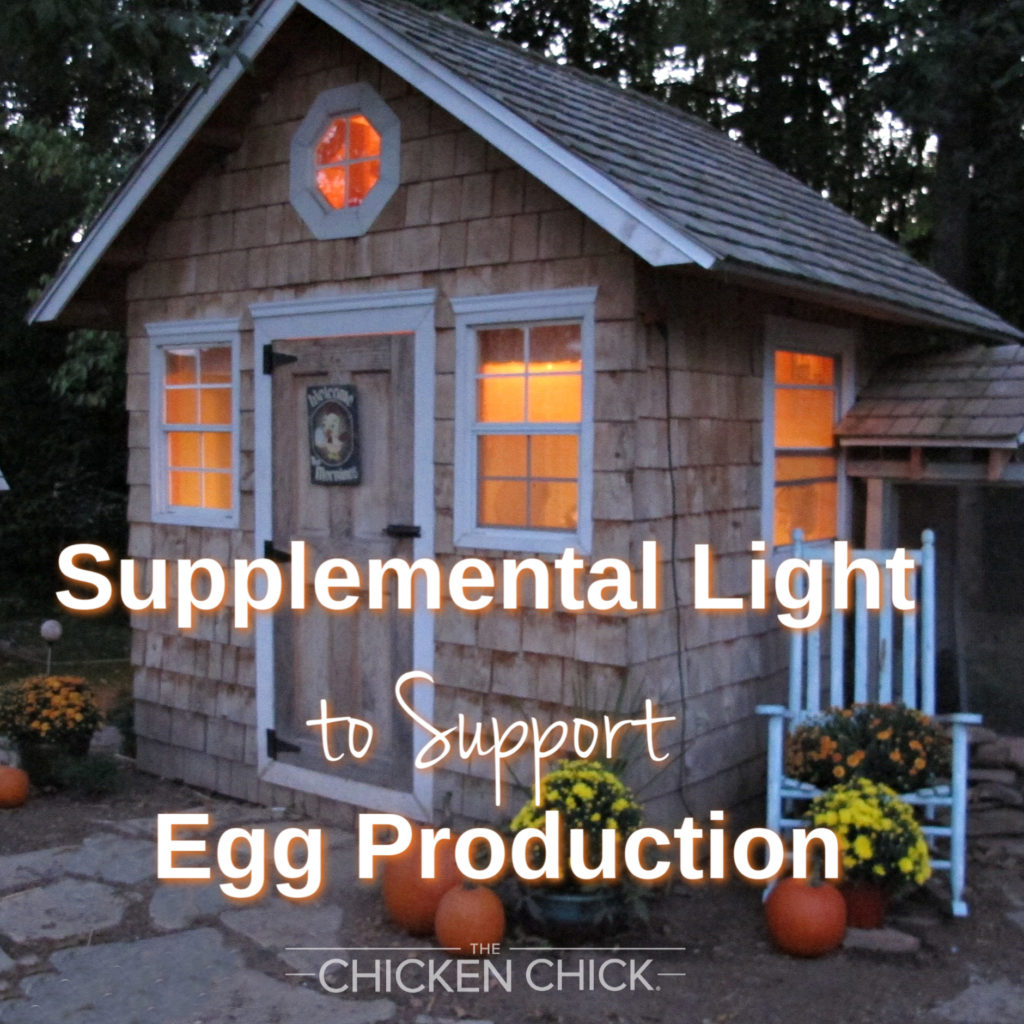
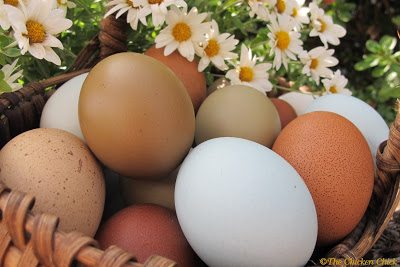
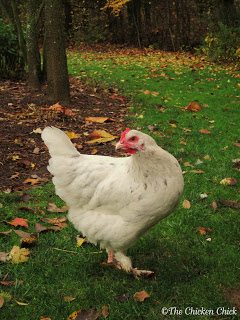
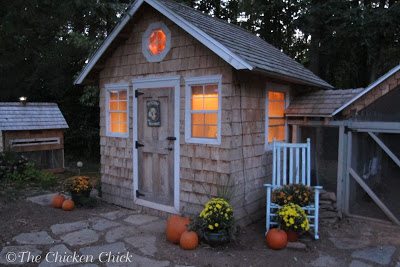
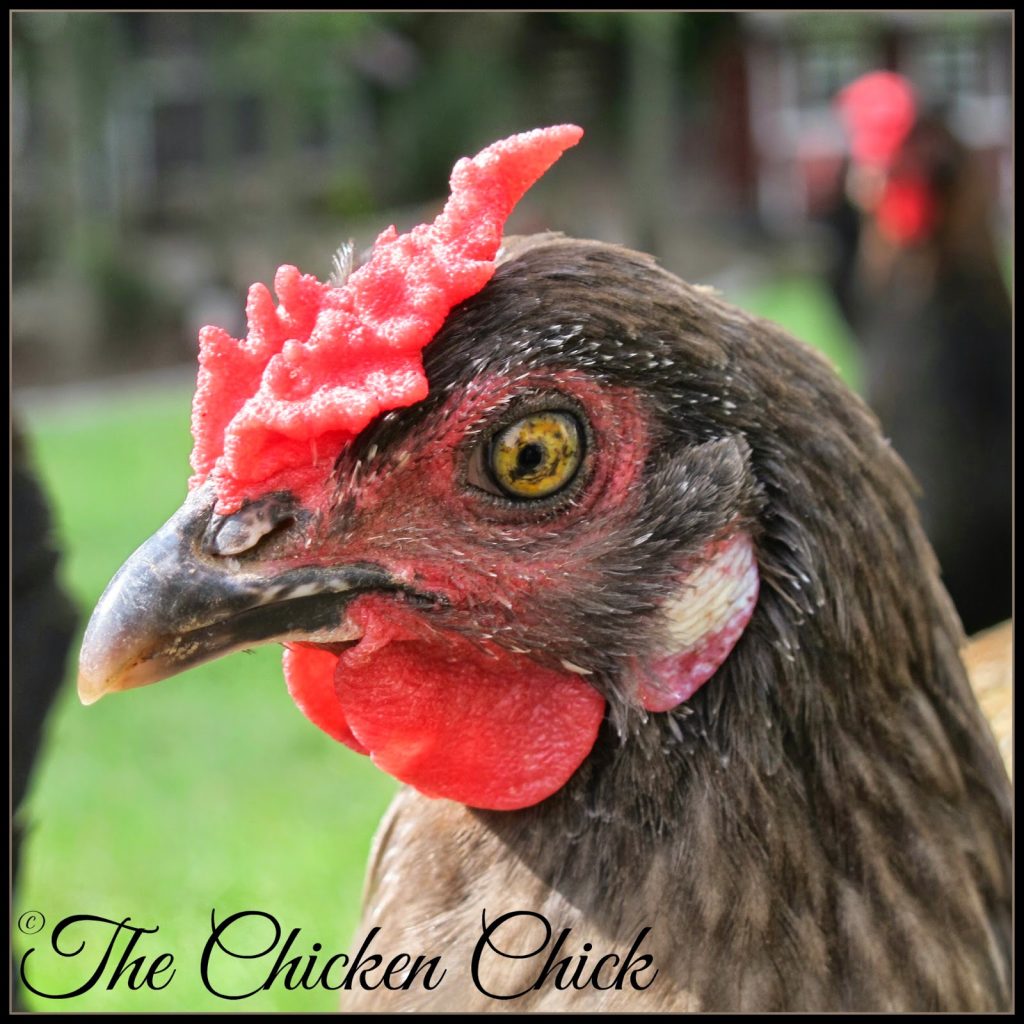
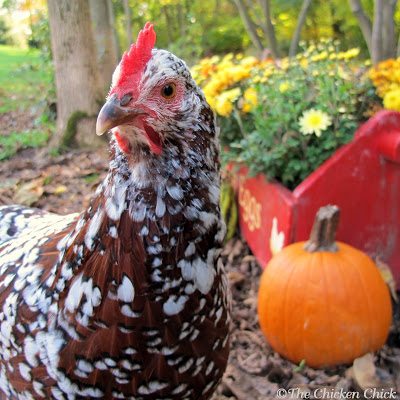

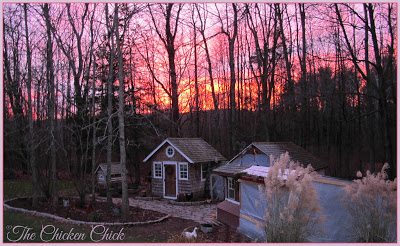
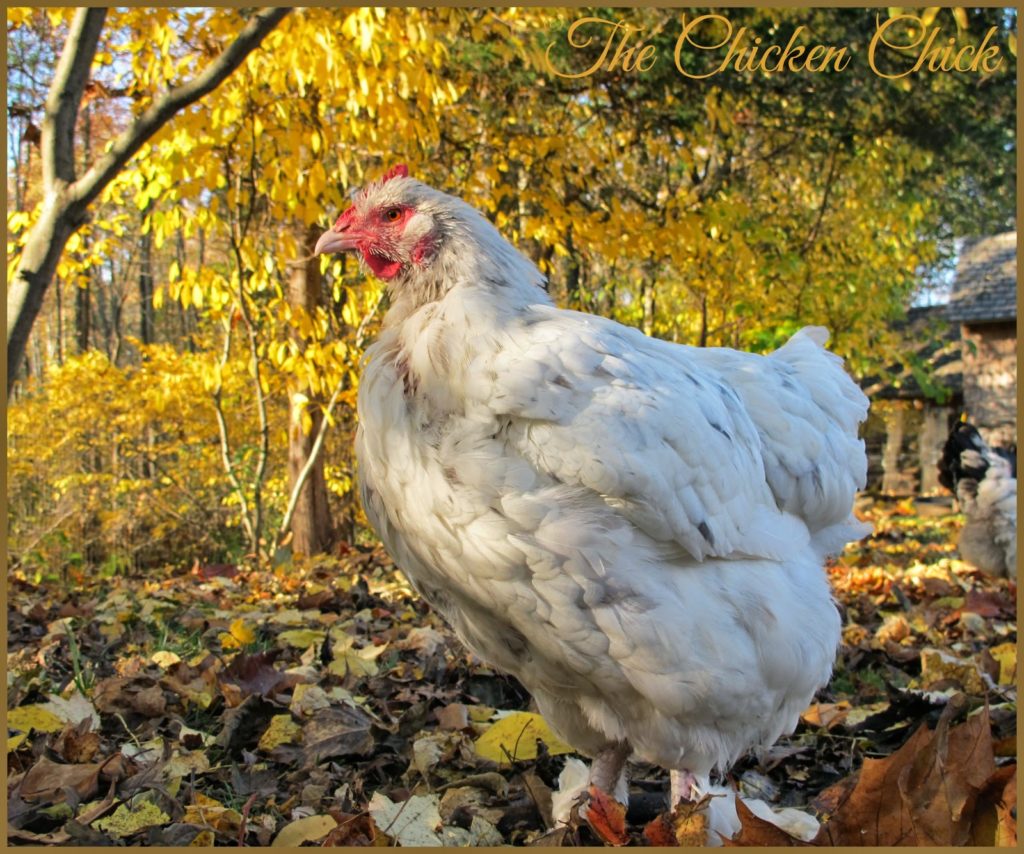
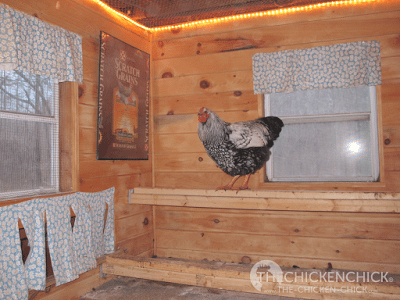
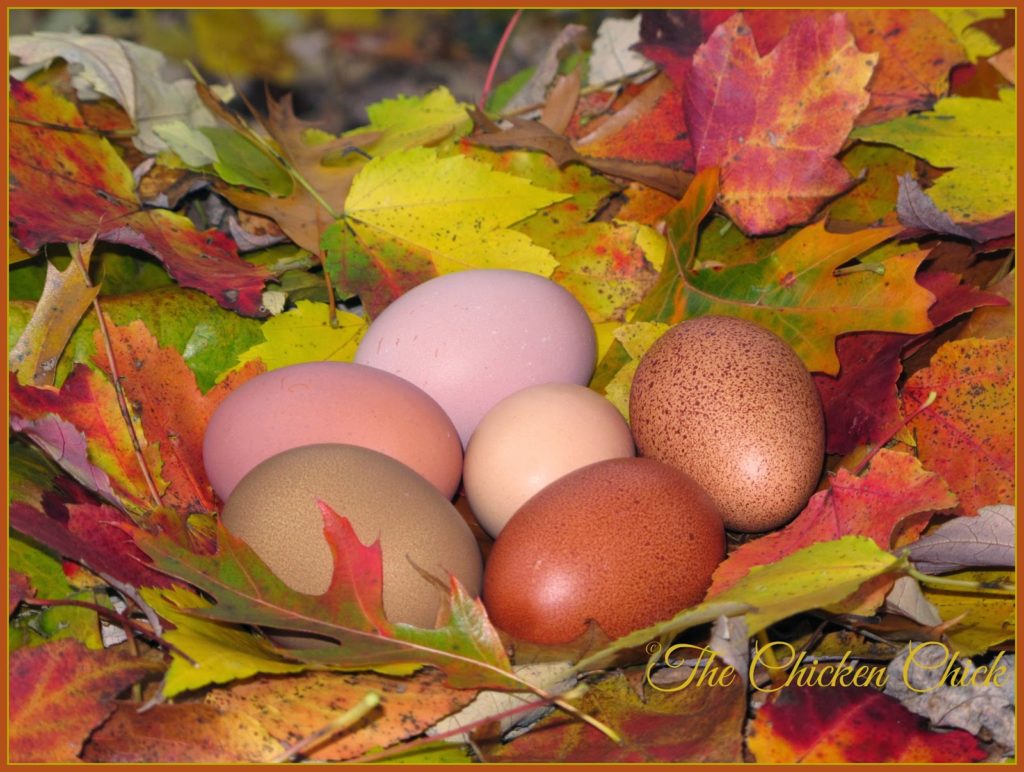

























My plan is to put supplemental lighting in the coop only so that we get 14 to 16 hours of “sunlight” for the chickens with the timer coming on in the morning and turning off about 15 minutes before sunrise. My question is do. I also need to light the run and give them access to the run or is it fine for them to just be in the coop with the supplemental light? We are in southern Massachusetts. First time chickens keeper, and this will be our first fall and winter.
Both the coop and run should be illuminated.
I am looking to start raising chickens for eggs and pets and am trying to get everything set up right . Do you have any suggestions or links that would be helpful for me to prepare?
Yes I do and they are all in my book, which you can get here: https://amzn.to/2KClTmD
Hi Kathy and thanks for all the extensive info you provide. The link for the lights brings me to unavailable item on amazon.
Sorry. This link works: https://amzn.to/3CVolkn
My two haven’t laid eggs all summer but they seem healthy, they’re only about 4 years old. Nothing has changed food, water or coop. I’m stumped any suggestions?
They’re four years old. That’s like 60 in human years. Their best egg laying days are in the rearview mirror.
Hey there. With the lighting…is it necessary when the days are long enough in the summer? If so what time do I need to have them come on in the morning so they can see to get down from their roosts?
NO. Let them wake up with sunrise and go to sleep with the natural setting of the sun. Please re-read this article for exactly when to add a few hours of light to the coop as day length wanes at the beginning of autumn.